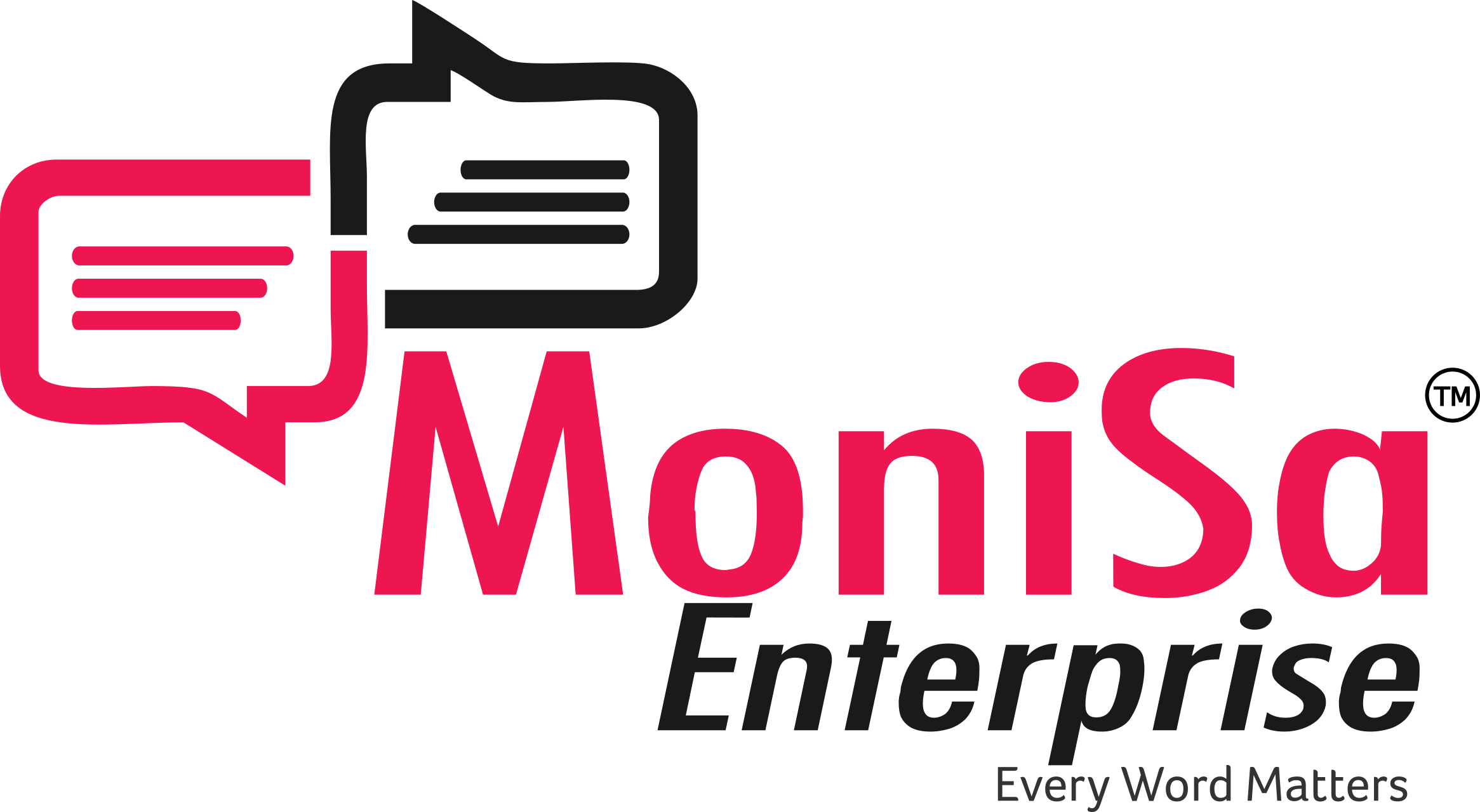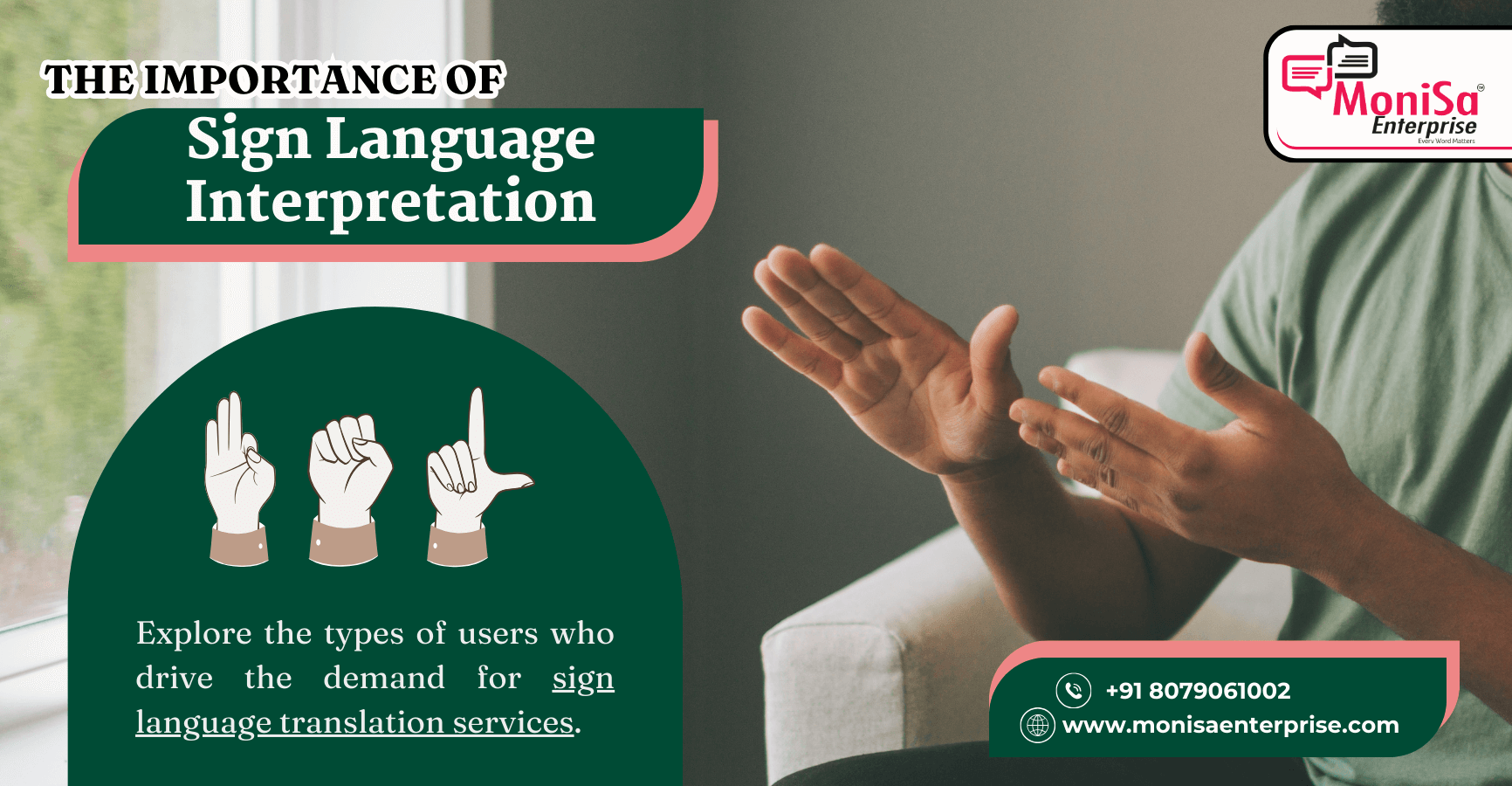Before delving into sign language interpretation, it is crucial to understand what sign language is and how it is essential in our daily lives. Sign language is a method of visual communication that utilizes hand gestures, symbols, facial expressions, and body language. Initially developed as a means of oral language for facilitating communication among physically impaired individuals, sign language has evolved into a powerful tool for inclusivity and accessibility.
What is Sign Language Interpretation?
Table Of Contents
Television programs and brands aim to reach diverse audiences, including regional groups who speak different languages. However, it is equally important to consider individuals with hearing impairments. Sign language interpretation services play a pivotal role in enabling communication for the hearing-impaired community. Whether it is television programs hiring sign language translators or corporate industries striving for inclusive meetings, sign language interpretation bridges the gap and fosters effective communication. To better understand the significance of sign language interpretation, let’s explore the four types of users who drive the demand for sign language translation services.
Users of Sign Language Translators
1. Educators
Sign language is taught in early education and sometimes as a second language in countries like the United States. Educators proficient in sign language use it to teach students with hearing impairments, creating an inclusive learning environment. Some educators even hold certifications in American Sign Language (ASL) to ensure professional expertise.
2. Service Sectors:
Various professionals, including doctors, lawyers, social workers, and more, require sign language interpreters to assist in effective communication with hearing-impaired individuals. In critical sectors like healthcare and legal services, accurate and reliable communication is crucial, and sign language interpreters play a vital role.
3. First Responders:
Medical assistance, emergency helplines, police departments, automobile repair helplines, and other national and international services rely on sign language interpretation to effectively communicate with individuals who are deaf or hearing impaired. Prompt and accurate communication is imperative in these emergencies, and sign language interpreters enable smooth interactions.
4. Business Organizations:
In today’s globalized world, businesses operate across diverse groups and cultures. Hiring sign language interpreters ensures smooth communication and inclusivity among professionals with hearing disabilities. By providing equal opportunities and access to information, businesses can maximize their potential and foster a diverse work environment.
Sign Language Interpretation vs. Subtitles
Subtitles are often considered a potential alternative to sign language interpretation, but they fall short in several aspects. Subtitles rely on written language, assuming that individuals are fluent in multiple languages. However, this expectation may not be realistic, especially when considering inclusivity. Sign language, being the primary form of communication for the hearing-impaired community, allows emotional connection and a deeper understanding of media content.
The Role of Sign Language Translators
Sign language interpreters, often referred to as translators, facilitate communication between deaf or hearing-impaired individuals and the hearing population. They are bilingual professionals trained to interpret sign language into the local language of choice. There are different types of sign language interpreters, including:
1. ASL Interpreting:
American Sign Language has its own rules of syntax, grammar, and cultural references. Interpreters who can fluently communicate in both English and ASL help bridge the gap and enable effective communication between the two languages.
2. Signed English Transliterating:
Transliterating interpreters visually spell out words or use assigned code words to construct English sentences through grammatical formations. This approach ensures an accurate representation of the spoken language.
3. Oral Interpretation:
Although less common nowadays, oral interpretation involves conveying messages in English without using voice, allowing lip readability. However, this method is less popular due to its lack of clarity, particularly in large group settings, where the spoken message can easily get lost in interpretation through sign language.
The functionality of Sign Language Interpretation
Sign language interpretation serves various essential functions;
1. Facilitating Communication:
Sign language interpreters play a vital role in opening lines of communication between individuals who may have otherwise never connected. By utilizing their services, communication becomes a two-way street, allowing needs and wants to be clearly expressed, even without spoken words.
2. Promoting Education and Awareness:
Our world is diverse, with people from all walks of life. However, it is easy to overlook the challenges faced by others in our daily lives. Sign language interpreters bridge this gap by providing education and awareness to both the hearing and hearing-impaired communities. They help create understanding and empathy, fostering a more inclusive society.
3. Enhancing Brand Accessibility:
Unfortunately, the hearing-impaired and disabled community is often overlooked in brand research and marketing strategies. By hiring sign language interpreters, businesses can engage with this community in a way that is informative, useful, and inclusive. It allows brands to reach a wider audience and demonstrate their commitment to accessibility.
Conclusion
Sign language interpretation is a crucial service that promotes communication, education, and inclusivity. While it may not be feasible for individuals to learn sign language on their own, professional sign language interpreters provide the expertise needed to ensure accurate and effective communication.
If you want to enhance the accessibility of your upcoming projects, consider hiring a professional language services provider like MoniSa Enterprise. Our interpretation services can bring the world together, breaking down barriers and fostering understanding among diverse groups.


